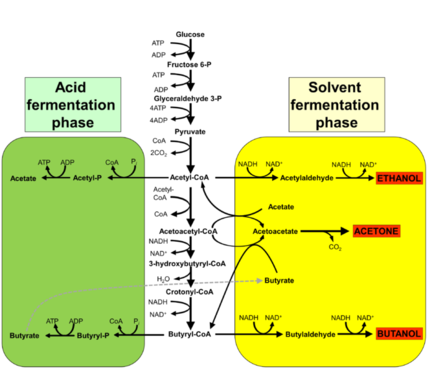Syngas Fermentation: Difference between revisions
No edit summary |
m (→Related Pages) |
||
| Line 7: | Line 7: | ||
==Related Pages== | ==Related Pages== | ||
* [[Staged pyrolysis]] | * [[Staged pyrolysis]] (for syngas with high value fraction and low level of fermentation inhibitors) | ||
* [[Biochemicals from Pyrolysis]] | * [[Biochemicals from Pyrolysis]] | ||
* [[Open Source Biotechnology]] | * [[Open Source Biotechnology]] | ||
Latest revision as of 23:00, 19 October 2017
Syngas fermentation is a microbial process whereby syngas (i.e. a gasification-derived mixture of hydrogen, carbon monoxide, and carbon dioxide) is used as the source for carbon and energy for subsequent conversion into fuel and chemicals by chemoautotrophic microbes. This process has some advantages over the Fischer-Tropsch process, which include more flexibility in feedstock, high specificity of the microbial catalysts, reaction near ambient temperature and pressure, as well as other aspects. Disadvantages include limitations in the gas-liquid mass transfer, impurities in syngas generated from biomass (may affect fermentation), as well as the sensitivity of microorganisms.
Products
The main products include ethanol, butanol, acetic acid, butyric acid, and methane. However, the applications are limitless given the capabilities of biotechnology.
Related Pages
- Staged pyrolysis (for syngas with high value fraction and low level of fermentation inhibitors)
- Biochemicals from Pyrolysis
- Open Source Biotechnology
- Biorefinery
- Wikipedia: "Syngas Fermentation"
- Wikipedia: "Wood–Ljungdahl pathway"

